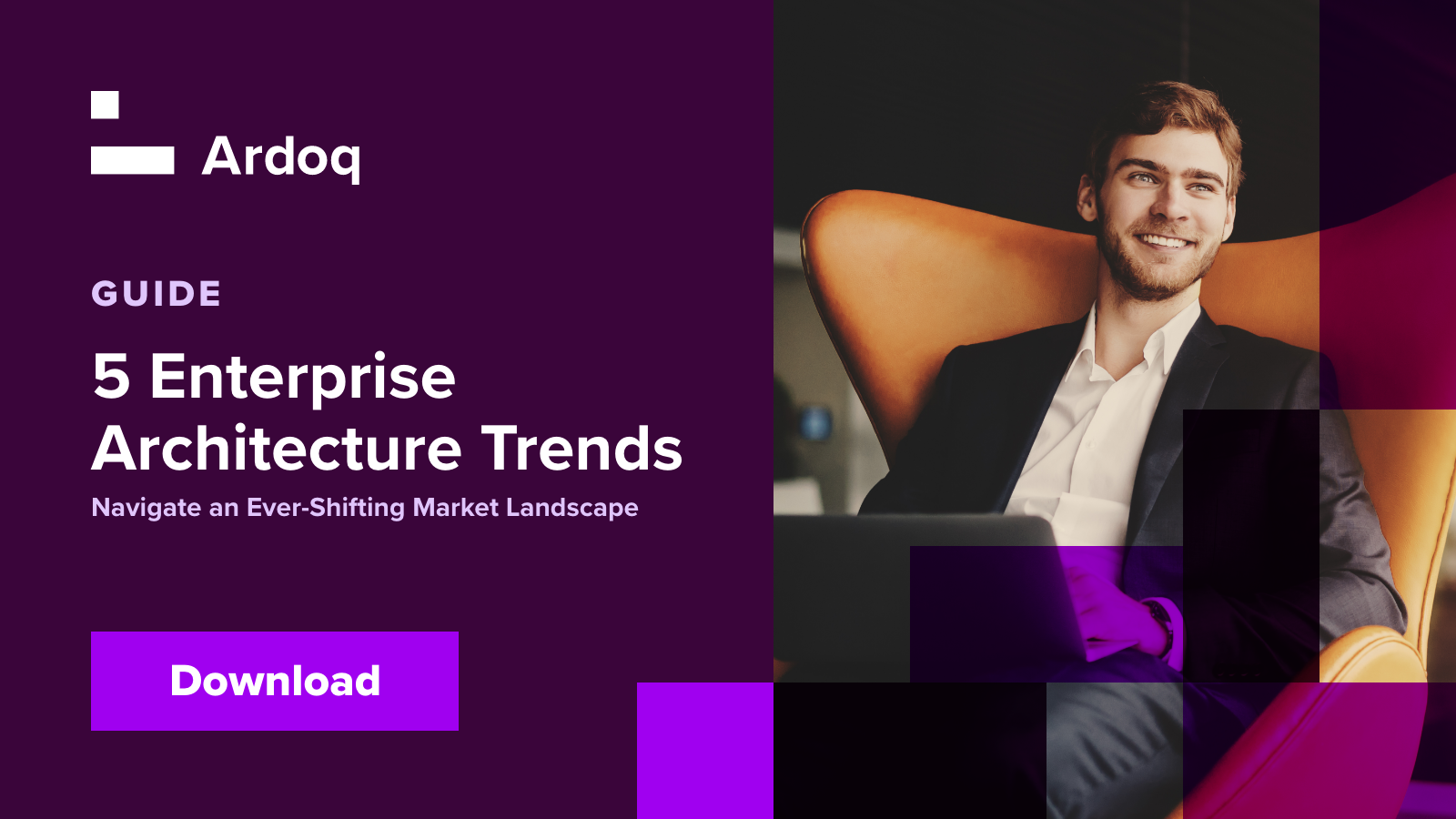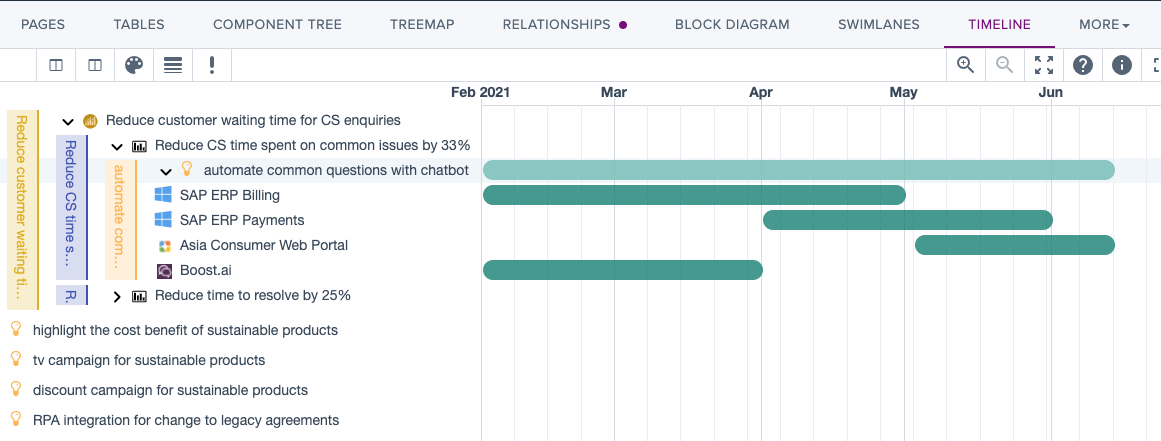The need to innovate and continuously change is a necessary survival skill for enterprises. How your organization executes that change is something that is unique to your organization. Keeping in touch with the newest ways of implementing change can be overwhelming, given that there are always new enterprise architecture trends vying for your attention. One that is particularly interesting to EA professionals is the Digital Twin of an Organization (DTO).
A DTO as Gartner defines it, is a dynamic software model of any organization. It relies on data to understand how an organization operationalizes its business model, connects with its current state, responds to changes, deploys resources, and delivers expected customer value.
Learn how this evolution of EA can helpr organization’s future plans.
Enterprise Architecture and Business Transformation
IT has changed from being a support function to the basis on which business operates. The article “Why Software is Eating the World” captured a lot of headlines back in 2011. It highlights the increasing digitalization of society. All companies - whether they realize it or not - are also IT companies. This digitalization has provided huge improvements in terms of automated operations and customer interactions for these companies. It has also caused increased competition, and disruption occurs more readily.
In this environment, time to execution is key. Rapid execution isn’t just about the speed. It’s about understanding the consequences of change as quickly as possible so that decision-makers can make good decisions. Organizations always have more innovative ideas than execution capacity. Decision-makers need certainty around the consequence of change and what the business benefits are. They need to know who needs to be involved and how long it will take. The impact and ripple effects of that change also need to be considered. Enterprise Architects (EAs) can answer these questions quickly and accurately to support business agility and rapid innovation.
Digital Twin of an Organization
A digital twin of an organization is about including relevant, dynamic, and operational data on the slower-changing structural data of traditional business, application, and technology architecture. Gartner introduced DTO in 2017, but the concept of digital twins emerged from the manufacturing and production industry over 15 years ago. A digital twin's purpose is to create a virtual representation of a physical product or system. The virtual representation is fully integrated with the physical product, so it stays up-to-date, and any changes in the virtual counterpart are reflected in the physical system. The purpose is to allow detailed analysis to be performed on the virtual counterpart without disturbing the original.
DTO applies the digital twin concept to IT management, Enterprise Architecture, and design. Augmenting conventional Enterprise Architecture models with situational awareness information supports improved enterprise decisions.
The operational data in a digital twin of an organization concerns how the company performs as a system. For starters, it asks how many projects are ongoing and where they overlap. It's not about traditional BI or analytics, such as tracking the number of new orders or customers per day.
Gartner's original article provides 12 examples that can be resolved by combining this type of operational data with traditional Enterprise Architecture models.
These use cases are:
- Enterprise performance
- Digital business
- Customer experience
- Demand-driven value network
- Business process management
- Manufacturing
- Business moments
- Business process outsourcing
- Mergers and acquisitions
- Risk management
- Program portfolio management
- Business capabilities
Deep dive into the key trends we see in Enterprise Architecture for today's landscape.

Digital Twin of an Organization as an Enterprise Architecture Trend
The key here is that the digital twin of an organization provides a continuous feedback loop between traditional Enterprise Architecture (EA) models and the operational data of the organization. One of the major roles of EAs is to support the continuous change process in the organization. The EA needs to combine both the traditional architecture models with information such as:
- Which teams are involved in a proposed change project
- How long the project will take to execute
- What current priorities for transformation are
- How proposed projects link to overarching strategies and objectives
- The anticipated benefits and when will they be realized
- The costs of implementing the change
- The opportunity cost or cost-of-delay if no change is made
Architects need to combine the traditional, structural architecture information with operational information to deliver these changes. Done continuously, this shortens the time-to-decision that is needed in an agile organization. Decision-makers need help, not just with where a change will impact but when that change can occur and what alternatives get them to market more quickly. This combination of structural and operational information is what we mean by digital twin for organizations.
For example, Ardoq can be used to indicate where proposed change projects will impact the enterprise architecture and identify the teams that need to be involved. Surveys can be broadcast to team owners to update lead time and estimated duration for their part of the initiative. Timelines can then be generated to show when initiatives can be delivered and enable discussion about adjustments that can be made to get to market earlier. 
Another example use case for a digital twin of an organization is to compare actual, measured benefits with estimates that were used during ideation and prioritization. Integrating external measurement systems, such as analytics and time-reporting, can help identify actual idea benefit realization and use that feedback to improve the prioritization process.
-2.png?width=721&name=image%20(1)-2.png)
Other initiatives, such as at the Intersection Group, include promoting the combination of organizational, business, and IT views more strongly than has traditionally been done. One of the main goals of EA is to support high-quality, quick decisions for portfolio and change management processes. Combining dynamic operational data with enterprise architecture data helps to make those decisions.
Digital twins are an especially interesting development for Enterprise Architecture that can be applied to all industries. Even In-Virtualis, a small company based out of Norway, can extract the benefits of the digital twin of the organization. The company provides a molecular modeling digital twin to support biomedical and nano-tech production. Through a digital twin of their organization, they aim to improve budget costs and labor spent in critical areas such as drug discovery and management and cancer immunotherapy, among other fields.
What Is the Future of Digital Twins and Their Impact on Business?
Digital twins are rapidly evolving from a novel technology to a strategic asset for organizations seeking to thrive in a complex, data-driven world. As businesses grow more interconnected, digital twins provide a real-time, virtual representation of physical processes, assets, and systems. From optimizing operations to enabling predictive analytics, their impact spans industries, offering unparalleled insights into efficiency and innovation.
When paired with Enterprise Architecture, digital twins transcend their technical roots to encompass a comprehensive view of business processes, capabilities, and relationships. Integrating business process information into the digital twin enables organizations to analyze dependencies, identify bottlenecks, and simulate potential outcomes with greater accuracy. This enriched data ecosystem allows for more precise decision-making, aligning IT and business strategies to unlock value at every level. Enterprise Architects play a crucial role in bridging these connections, ensuring that the digital twin delivers actionable insights that empower leaders to shape the future of their organizations.
Ardoq's dynamic Enterprise Architecture platform is now partnering with Celonis's market-leading process mining capabilities to provide CIOs and their teams with unparalleled visibility and control over their organizational processes and IT landscapes. The joint solution will be to create an enhanced digital twin of the organization that will empower CIOs to better align technology investments with the business’ needs.
IT leaders can now align their initiatives with strategic objectives more effectively, ensuring every investment drives tangible outcomes. This innovative approach transforms how ROI is tracked and enables ongoing optimization to maintain a competitive edge.
Learn more about Ardoq's partnership and joint solution: Bridging IT & Business: Partnership and Key Insights From Celosphere 2024
See how a digital twin of an organization can help Enterprise Architecture leaders prioritize, guide, plan, monitor, analyze, and scale complex initiatives. Book your demo today.
